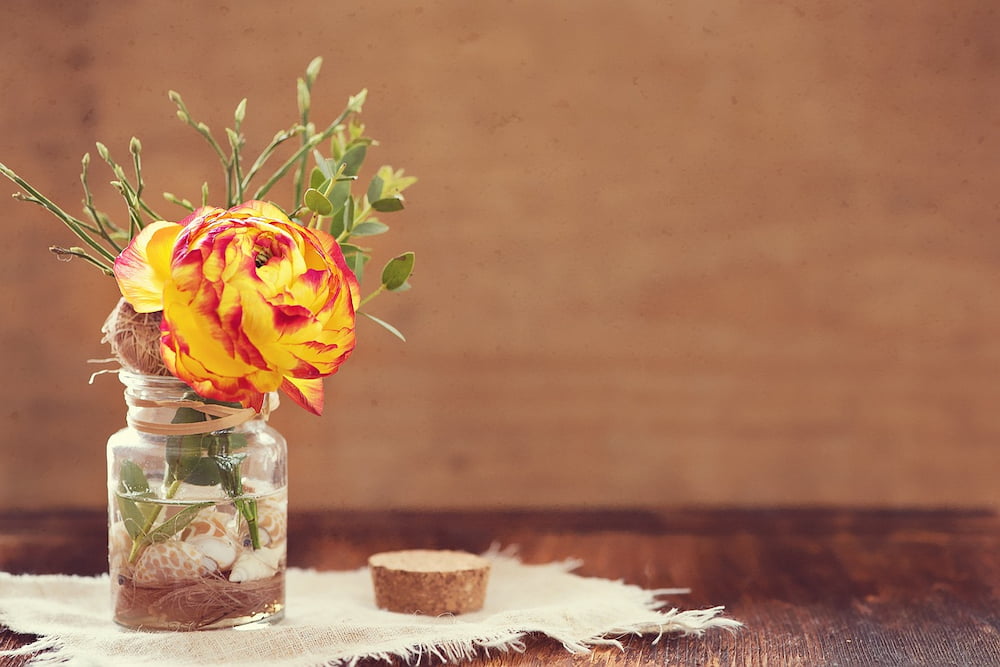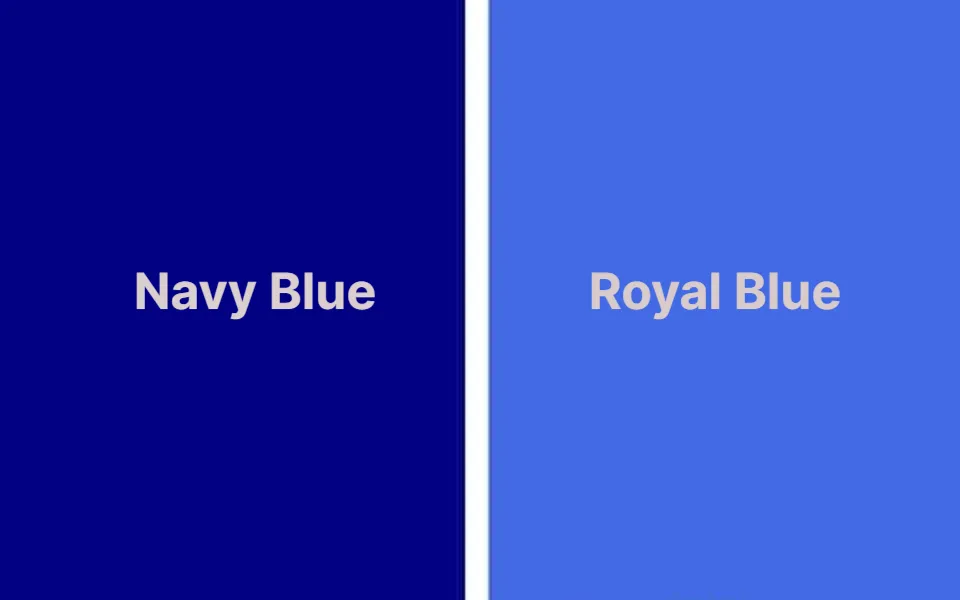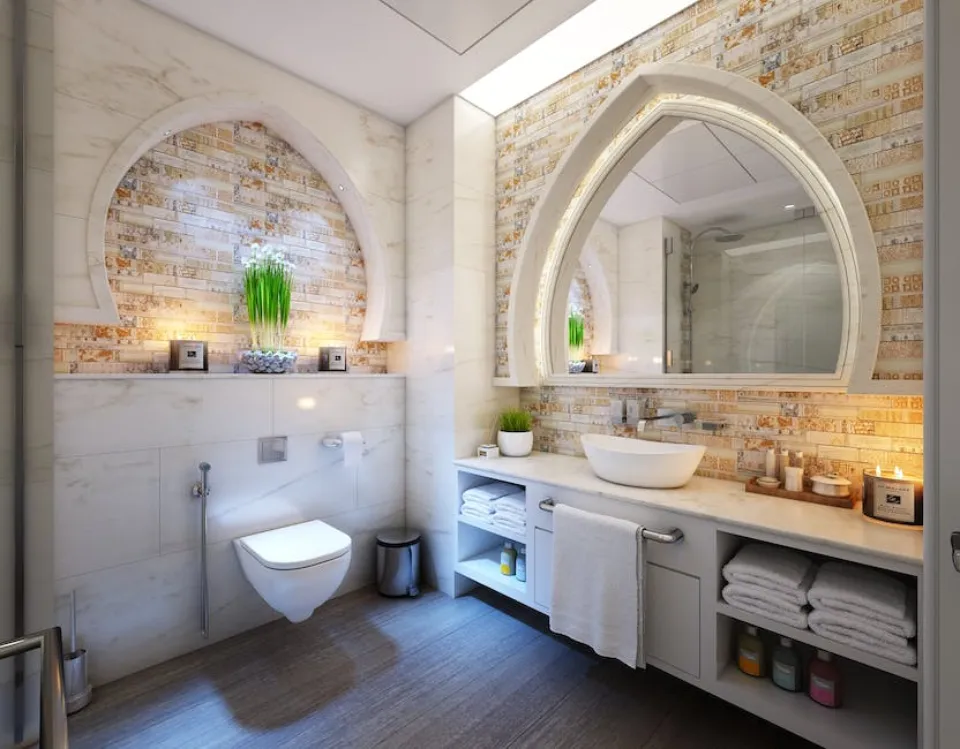Come Up With a Design, Clean the Vase, Prep Your Workspace, Mix the Paint and Baking Soda, Paint the First Layer of Paint on the Glass Vase, Paint the Second Layer of Paint on the Glass Vase, Add the Texture, Adding some depth is optional.), Clean Up & ENJOY!
Are there any inexpensive glass vases lying around? I have a fair share I’ve collected from thrift stores and even though I’m a fan of glass, mine rarely get used. So today I’m going to show you How To Paint Glass Vases so your gorgeous new finish Sticks and remains in place as you display these beauties.
Please read on for more detailed information on how to paint glass vases.
What You’ll Need
- Vases or jars
- Clean rags or paper towels
- Paint
- Baking soda
- brush
Instructions
Come Up With a Design
Decide on the design of your vase first, as this will determine the specific materials you’ll need. You might want to spray paint several glass vases and use them as a festive party centerpiece, or you might want to make one statement piece to decorate your mantel with. Use glossy spray paint to create a bolder vase, perhaps for use as seasonal décor, if you’re going for a more understated mid-century modern appearance.
Clean the Vase
Before you start, thoroughly clean the glass vase with hot, soapy water to remove any dirt or grime. After that, dry it thoroughly with a clean dish towel and check to make sure the vase is free of any fuzz or other debris.
Prep Your Workspace
Prepare your workspace now that you’re prepared to begin painting the vase. Work in a well-ventilated space, ideally outside. To prevent the spray paint from damaging the surface area under the vase, cover it with a covering made of plastic or protective cloth.
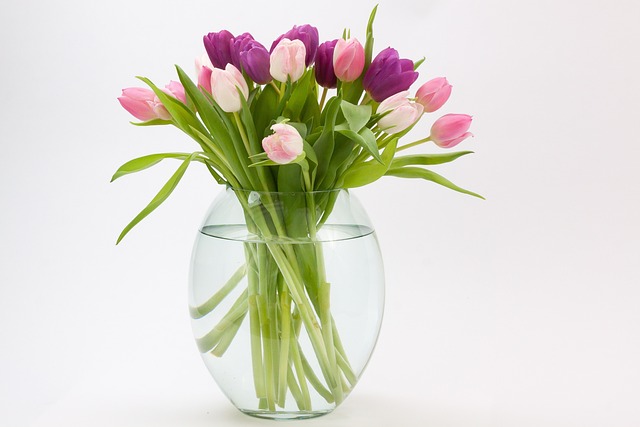
Mix the Paint and Baking Soda
Mix 1/4 to 1/2 cup of baking soda for every cup of paint in the bowl, measuring cup, and measuring spoon. You could also add 2-4 tablespoons of baking soda to a half cup of paint since a full cup of paint will be far more than you need to paint a single vase. When you can see texture in your paint strokes and small bubbles begin to form, you’ll know the ratio is correct. If you decide more should be added, you can always make adjustments.
Suggested reading: One of the best ways to quickly improve the appearance and ambiance of a space where you probably spend a lot of time is by updating your kitchen cabinets. So, how much does it cost to paint kitchen cabinets?
Paint the First Layer of Paint on the Glass Vase
All the sides of your glass vase should be completely covered with a thick coat. Although it might appear chunky and streaky, don’t worry about it! You’re applying multiple coats and aiming for a textured look. It will take some time for this first coat to dry because it is so thick. To hasten the drying process, use a hairdryer. To prevent drying out between coats, make sure to cover the paint you’ve mixed with some plastic wrap. In order to keep the moisture in the brush, make sure it is also wrapped in a plastic bag or something comparable.
Paint the Second Layer of Paint on the Glass Vase
Apply your second coat while the first coat is still a little tacky. It’s okay if it begins to clump up and move slightly around the first coat. That only facilitates the process since you’re trying to add texture. It should appear somewhat gloppy and thick. It’s also acceptable if it’s shiny right now, even though that goes against the idea of giving it a ceramic feel. It will be extremely matte when fully dried.
Add the Texture
Start stippling the glass vase with whatever you’re using to add texture while the second coat is still tacky. Stippling is the process of repeatedly tapping a vase quickly and relatively lightly to add texture to the tacky, new paint. If you want your painting to truly have a ceramic appearance, be sure to stipple out all of the brush strokes that you can see. Continue until you have gone all the way around the vase’s exterior.
Add Some Dimension (OPTIONAL!)
If you happen to have some lighter paint lying around, you could dry brush your finished product (after it has dried completely) to add a little bit of extra dimension. This merely means that you cover the entire vase with the smallest amount of paint applied with a dry brush to emphasize the textured area. A little paint should be applied to your brush, most of it should be removed with a paper towel, and you should then gently go over the vase to get the paint to adhere to the raised-up texture. However, I wanted to give you the option in case you wanted to give your glass vase a little extra flair.
Clean Up & ENJOY!
Wash the bowl and brush thoroughly and discard whatever was keeping your surface clean while the vase dries. If the vase is still not dry, you can aid drying with a hair dryer. However, you must be careful when handling the vase to avoid leaving behind unwanted fingerprints on the recently painted surface. Now fill your vase with something lovely, relax, and take in all your hard work!
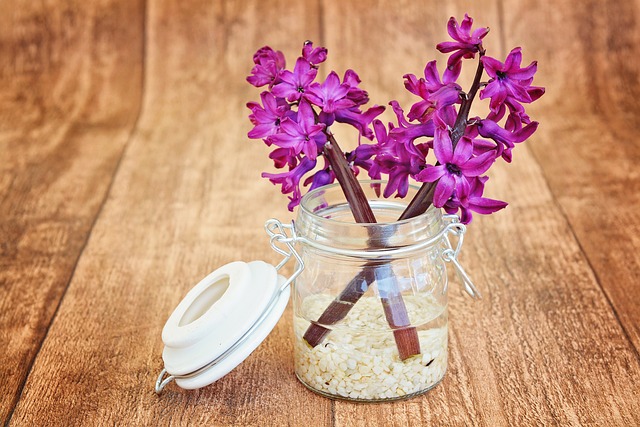
FAQs
How To Paint Glass Vases To Look Like Terracotta?
A teaspoon of baking powder and a cup of paint should be combined. For her vases, the TikToker used interior acrylic paint that is water-based. After that, paint the vase’s exterior and interior in broad strokes. Add another coat of paint after it has had time to dry.
How To Spray Paint Glass Vases?
- Wash and dry your vase.
- Your vase will look better after the initial coat of spray paint has dried. …
- Let first coat dry.
- Apply a second, thin coat.
- Let second coat dry.
- Till you achieve the desired appearance, keep applying light coats of paint. …
- Choose the second color once it has dried completely.
Painting Glass Vases With Paint And Baking Soda
For a beautiful matte finish that makes ordinary glass look like ceramic pottery, add 1 tablespoon baking soda to any color water-based paint and mix thoroughly. Only latex or acrylic paint should be used; oil-based paint will not work. Brush strokes should be horizontal when applying to a spotless glass surface.
Final Words
Any vase can be made into a unique piece of decor in an infinite number of ways that won’t break the bank. Even one straightforward can of spray paint has the power to significantly alter things!
Please post a question in the comments if you have any.
I appreciate your reading.
Suggested articles:
